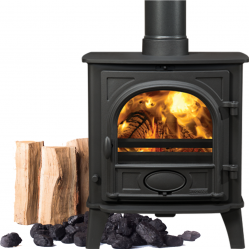OBSOLETE - Villager Bayswater Flat Stove

Technical Details
| Product Title | OBSOLETE - Villager Bayswater Flat Stove |
|---|---|
| Output (Nominal) | 7.5kW |
| Output (Maximum) | 9kW |
| Smoke Control (DEFRA) | No |
| Boiler Stove | No |
| Colour | Black |
| Flue Outlet Size | 125mm - 5in |
| Fuel | Multifuel |
| Height | 542mm |
| Width | 573mm |
| Depth | 355mm |
| Nominal Output (Range) | 7kW - 9kW |
| Width (Range) | 500mm - 600mm |
| Nett Efficiency (%) | 71.8 |
| Max log length | 400mm |
| Distance to Combustibles (Side) | 500mm |
| Distance to Combustibles (Rear) | 760mm |
| Style | Traditional |
| Centre of Flue to Rear | 137mm |
| Distance to Combustibles (Top) | 381 |
| 12mm Hearth Compatible | Yes |
Reviews
Multi Fuel Stoves > 6kW and Over Multifuel Stoves

6kW and over Multifuel Stoves
Do you have a larger than a standard room? Or perhaps an extension or high ceilings? Then consider a 6kW or over multifuel stove to kick out that extra bit of heat. Stoves with a nominal output of 6kW or over are a great choice for larger rooms or open-plan homes as they tend to be significantly larger in size compared to an average 5kW stove and produce considerably more heat. At Firebox Stoves, we sell a huge range of high output multifuel stoves, from 6kW nominal output up to 15kW and even some 20kW multifuel stoves, for those really, really big spaces.
It is worth mentioning that, as regulated by HETAS, any multifuel stove with an output of 6kW or more will require some form of ventilation in the room in which the stove is situated. This can be a direct air supply to the stove, or an airbrick located near the stove, but it is a necessity for rooms with a high output stove.



